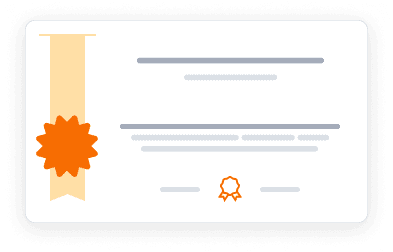This course is part of Design et Évaluation UX.
Become a UX data scientist with this comprehensive course that bridges Big Data and UX. Learn essential methods and tools for analyzing the full spectrum of UX data, from qualitative analysis to web analytics. Taught by award-winning professors, this course equips you to extract valuable insights from data and formulate evidence-based recommendations to create optimal, friction-free user experiences. The curriculum covers descriptive statistics, study design, bias sources, hypothesis testing, mean comparisons, two-factor ANOVA, and practical applications in user experience. No prior statistics knowledge is required, though access to Excel software is necessary for certification completion. Discover what lies behind UX data analysis through this accessible course, designed for professionals seeking to enhance their analytical skills in user experience design.
Instructors:
French
Français
What you'll learn
Learn descriptive statistics techniques essential for organizing and summarizing UX data Master study design principles to ensure valid and reliable user research Identify and mitigate various sources of bias that can affect UX research outcomes Conduct hypothesis testing to validate assumptions about user behavior Perform mean comparisons to identify significant differences in user interactions Apply two-factor ANOVA for complex analysis of user experience variables Translate statistical findings into actionable UX improvements
Skills you'll gain
This course includes:
PreRecorded video
Graded assignments, exams
Access on Mobile, Tablet, Desktop
Limited Access access
Shareable certificate
Closed caption
Get a Completion Certificate
Share your certificate with prospective employers and your professional network on LinkedIn.
Created by
Provided by

Top companies offer this course to their employees
Top companies provide this course to enhance their employees' skills, ensuring they excel in handling complex projects and drive organizational success.





Module Description
This comprehensive course covers the essential methods and tools for analyzing UX data across the spectrum, from qualitative analysis to web analytics. The curriculum begins with foundational concepts in descriptive statistics before diving into study design principles and understanding various sources of bias that can affect research outcomes. Students will learn practical hypothesis testing techniques and how to effectively compare means to draw meaningful conclusions from user data. The course also covers two-factor ANOVA, providing more advanced statistical analysis capabilities. Throughout the program, all concepts are directly applied to user experience contexts, showing how data analysis can inform better UX decisions. The course is designed to be accessible to professionals without prior statistical knowledge, focusing on practical applications rather than theoretical concepts. By the end of the course, participants will be able to extract valuable insights from UX data and formulate evidence-based recommendations to create optimal, friction-free user experiences.
Fee Structure
Individual course purchase is not available - to enroll in this course with a certificate, you need to purchase the complete Professional Certificate Course. For enrollment and detailed fee structure, visit the following: Design et Évaluation UX
Payment options
Financial Aid
Instructors

8 Courses
Probability and Financial Engineering Expert at HEC Montréa
Chantal Labbé, Associate Professor at HEC Montréal, specializes in stochastic processes, financial engineering, and portfolio optimization, with award-winning teaching in decision sciences.

8 Courses
Leading Statistician and User Experience Researcher at HEC Montréal
Marc Fredette, Professor at HEC Montréal, specializes in biostatistics, Bayesian stats, and longitudinal data analysis, advancing UX research and education.
Testimonials
Testimonials and success stories are a testament to the quality of this program and its impact on your career and learning journey. Be the first to help others make an informed decision by sharing your review of the course.
Frequently asked questions
Below are some of the most commonly asked questions about this course. We aim to provide clear and concise answers to help you better understand the course content, structure, and any other relevant information. If you have any additional questions or if your question is not listed here, please don't hesitate to reach out to our support team for further assistance.



